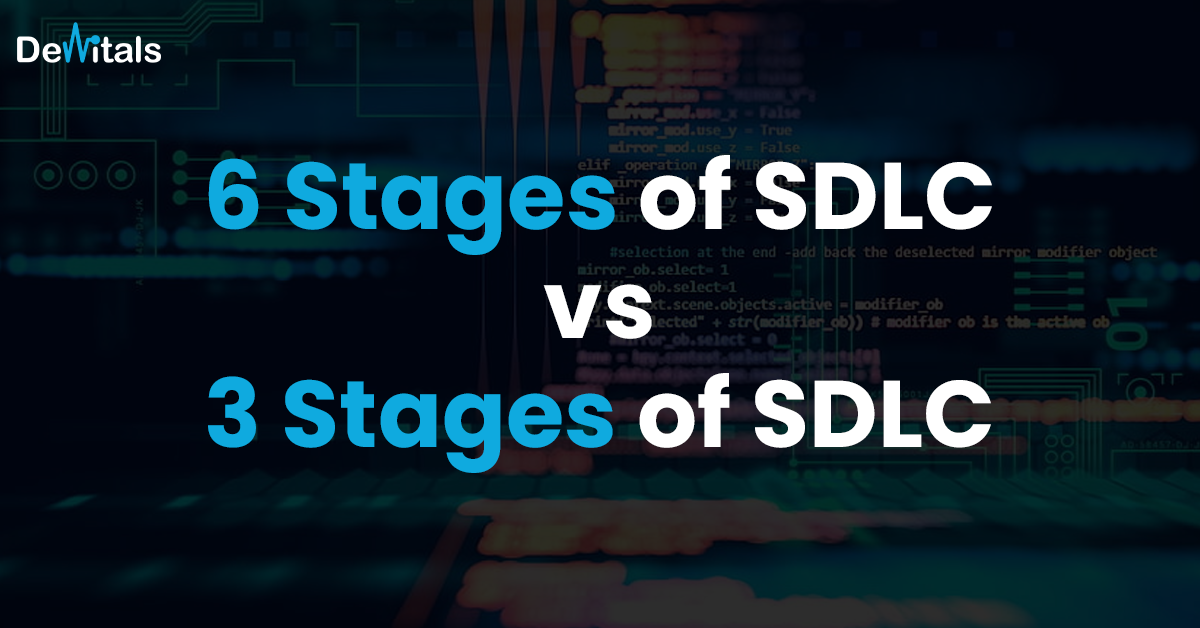Since the 1990s, a six-stage software development life cycle (SDLC) has been widely used by most organizations to ensure quality and identify potential issues prior to release. However, a new discussion has emerged recently about the possibility of reducing the SDLC from six to three stages. Therefore, it is important to consider whether this change would provide any benefits or whether it is better to continue using the traditional six-stage SDLC.
Here Are Six Stages of SDLC
The process of Software Development Life Cycle (SDLC), also called System Development Life Cycle or Application Development Life Cycle, is a series of steps followed to accomplish necessary tasks, including coding, testing, and production, within a limited timeframe. While the majority of SDLCs consist of six phases, a three-phase SDLC proposed by Roost.ai’s co-founder, Rishi Yadav, has caused disagreement among internet users.
Following are the SDLC phases that are currently being followed:
- The planning phase, which is also referred to as the feasibility stage, involves creating a plan that considers all the services and technologies needed. During this stage, the scope of work, execution methods, and specific objectives are determined.
- The analysis stage is crucial for introducing a new product or service as it involves gathering necessary information and requirements. It also involves analyzing prototype ideas and selecting hardware, software tools, or technologies.
- The design stage is central to the SDLC process. It begins by evaluating UI/UX design and database requirements, followed by outlining the app or website’s basic flowchart or mockup. Once done, development (implementation) can begin.
- In the development stage, developers write code and use compilers and interpreters to fix bugs, keeping all SDLC phases in mind.
- Testing and integration are critical to the end-user experience, and analyzing the code’s functionality requires thorough testing and integration with other source codes.
- Maintenance begins as soon as the software goes live, and developers remain in maintenance mode to make changes and fix remaining bugs.
Key Phases: Development and Production
Rishi’s viewpoint is that the development and production phases are more crucial in the SDLC compared to the middle three stages (testing, integration, and staging), which are less significant. Consequently, he decided to bypass the middle stages and merge all their tasks in the pre-production phase, without any complications. The rationale behind his approach is that the application’s birthplace is in the development stage, while its home is in the production stage. Therefore, the emphasis should be on the starting and ending phases of the SDLC to facilitate a smooth and swift transition between them.
However, undervaluing the testing, integration, and staging stages in a six-stage SDLC is not advisable, as it can result in more errors and slower development processes than modern, cloud-native methods. It is better to adopt a three-stage SDLC that prioritizes reducing the gap between development and production stages to increase development speed while minimizing the risk of failure. This approach also provides developers with more control over testing and enhancing their services, which enhances their confidence in deploying them.
Review of the Situation
The number of SDLC phases does not necessarily matter as they can be effective in various cases. For longer projects that involve complex software with detailed code, the 6-stage SDLC can make a significant difference as it allows for thorough analysis and checking of the code in smaller segments. When dealing with software that caters to a large number of users or products, designing, integrating, and testing are necessary, making a 6-stage SDLC a suitable choice. However, for smaller projects that only take a few days or weeks, a 3-stage software life cycle can suffice as a developer can handle coding, testing, and integration independently. Ultimately, the decision on which SDLC to use depends on the company’s work environment and their software and app development responsibilities. They may opt for a 6-stage SDLC or find that the three SDLC phases deliver satisfactory results.
Final Thoughts
The majority of software development and design firms utilize the Software Development Lifecycle (SDLC) to break down tasks into manageable chunks. It simply requires selecting the most effective approach for your needs and being prepared to produce impressive results.


